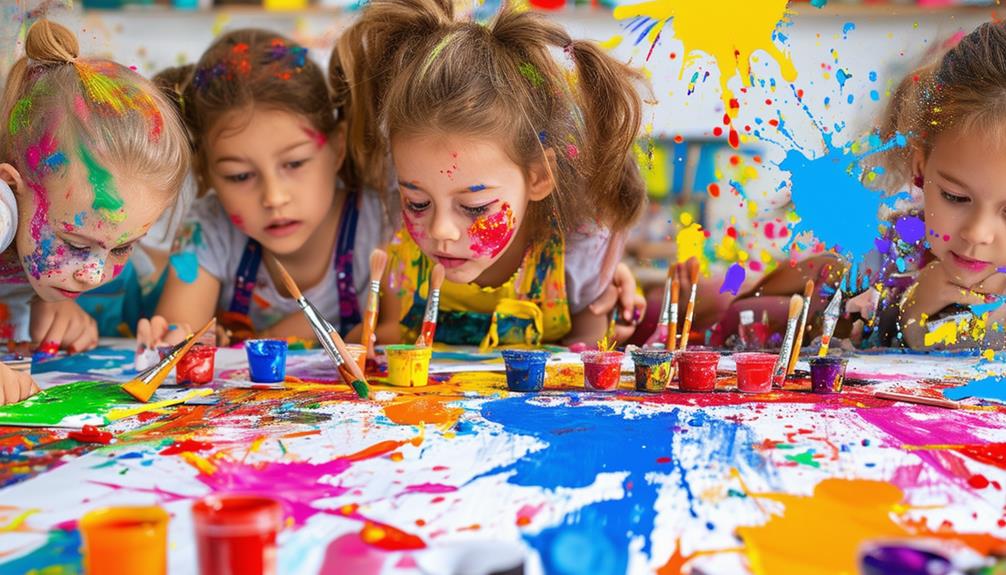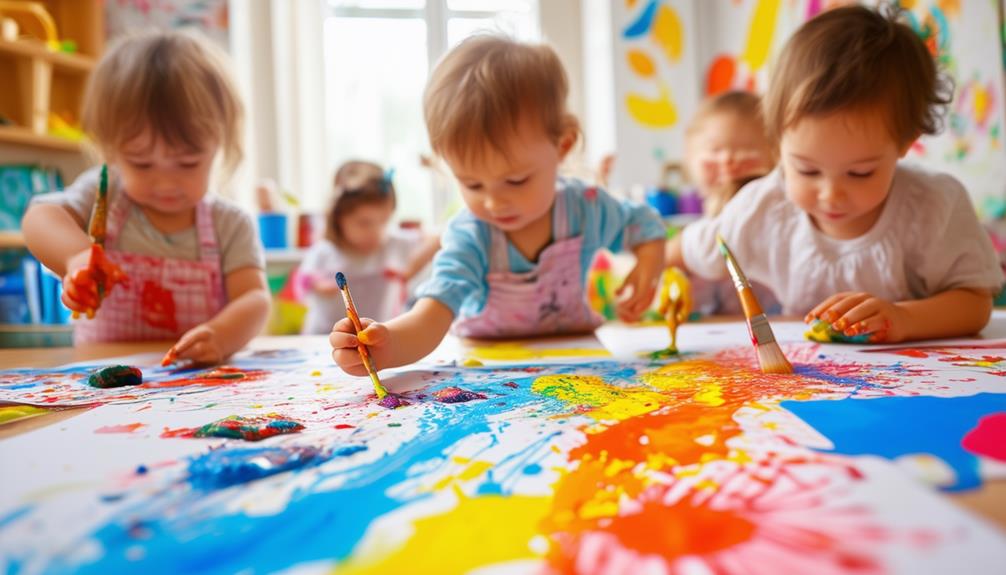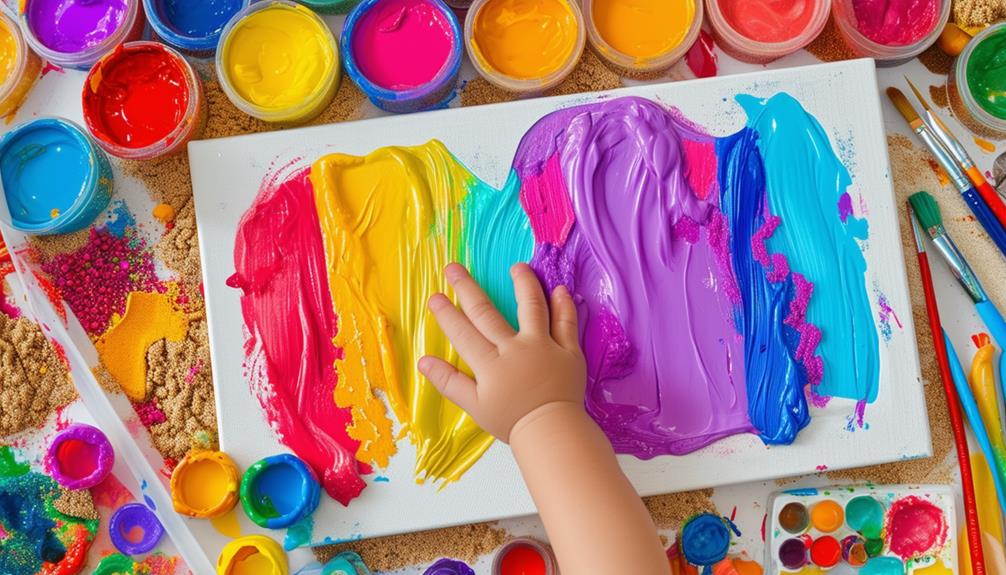Playdough and Emotional Development: Creative Expression Ideas
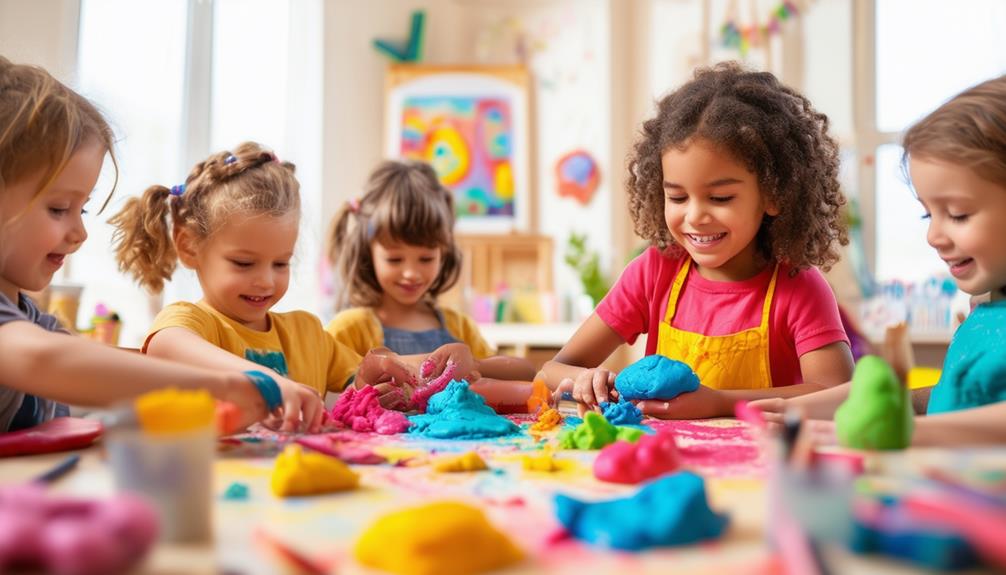
Playdough is more than just a simple toy; it's a powerful tool for emotional development. By encouraging children to shape different facial expressions with playdough, you help them visualize and understand their own emotions. This hands-on activity not only enhances fine motor skills but also fosters self-awareness and empathy. Integrating playdough activities into their routine can promote communication skills and emotional intelligence in a fun and engaging way. Want to learn how to seamlessly incorporate these activities into daily life to enhance emotional learning?
Benefits of Playdough for Emotions
Using playdough allows children to explore and express a wide range of emotions through creative play. Beyond being a fun activity, it serves as a powerful tool for emotional exploration. When children manipulate playdough, they engage in a tactile experience that can act as a therapeutic outlet for processing and communicating their feelings. This hands-on activity aids in identifying and differentiating various emotions, enhancing their emotional intelligence.
By crafting different shapes and facial expressions with playdough, children learn to recognize and understand complex emotions in themselves and others. This practice fosters self-awareness and builds empathy, essential components of strong social skills. Additionally, as children mold and shape the playdough, they develop fine motor skills crucial for overall development.
Emotional learning through playdough is an effective way for children to gain better control over their emotional states. It provides a safe space for them to explore their feelings, leading to improved emotional regulation. Through this creative play, children not only investigate their emotions but also develop fundamental social skills that will benefit them throughout their lives.
Materials Needed for Activities
To kickstart playdough activities for emotional growth, gather essential materials like playdough, emotion cards, picture cards, and dry erase markers. These items create a rich environment for children to explore their feelings. Playdough acts as the centerpiece, enabling kids to mold and shape representations of their emotions.
Emotion cards serve as visual aids, helping children recognize and articulate various emotions. Laminated playdough mats, featuring faces or scenes, are excellent for repeated use and can hold playdough creations. Picture cards introduce scenarios that prompt discussions about feelings and social situations, enriching both emotional and social skills. Children learn to express their emotions and understand others' feelings, fostering empathy and social interaction.
Dry erase markers are useful for writing words or drawing additional elements on laminated surfaces, making activities more interactive. Homemade playdough can add a personal touch, while sensory elements like scents or textures can deepen emotional learning experiences.
Creative Expression Techniques
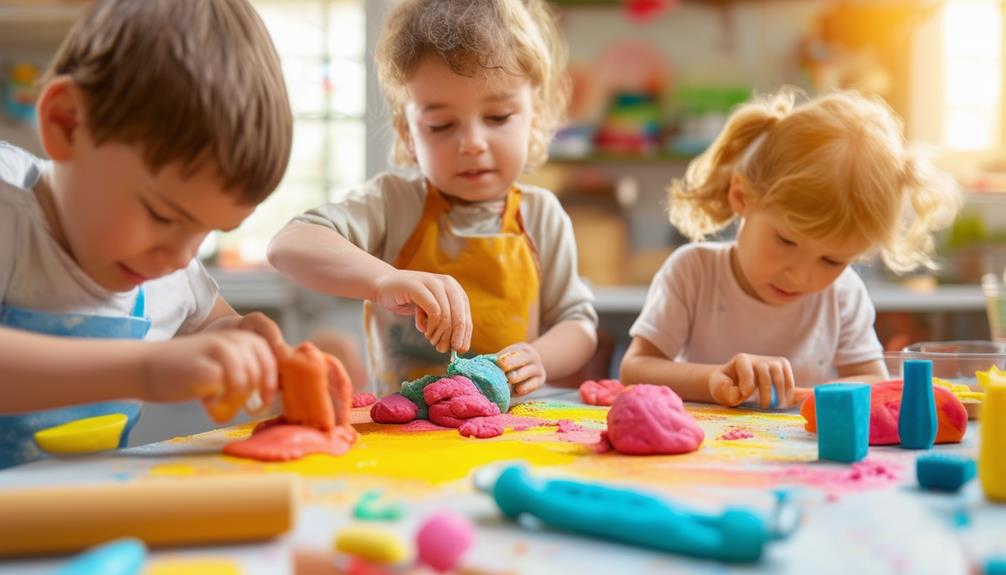
Shaping playdough into various facial expressions allows children to explore and identify their emotions in an engaging, hands-on manner. By crafting eyes, mouths, and other facial features, kids can visually express how they feel. This activity not only enhances emotional awareness but also fosters creative expression.
Engaging in these activities enables children to explore emotions tactilely, which can be more impactful than merely discussing them. The act of molding and reshaping playdough also helps develop fine motor skills, adding a physical dimension to emotional exploration. As children create different facial expressions, they gain a clearer understanding of what various emotions look like and how they can be communicated nonverbally.
This use of playdough for emotional exploration promotes self-awareness and emotional intelligence. It provides children with an opportunity to practice identifying and naming their feelings, a crucial step in emotional development. Incorporating playdough into daily routines offers a space where kids can freely explore their emotions and enhance their creative expression. This hands-on approach not only makes emotional learning engaging but also helps children build essential communication skills for expressing their emotions more effectively.
Enhancing Communication Skills
Playdough activities offer a dynamic way for children to enhance their communication skills by expressing emotions and telling stories. By using playdough to create different facial expressions, children begin to understand and convey their feelings more effectively. This process also fosters empathy as they learn to recognize and respond to emotions in others.
Incorporating emotions playdough mats into daily routines can significantly impact communication skills. These mats encourage open discussions about emotions, facilitating healthy communication habits. Children can sculpt faces showing a range of emotions, allowing them to express their feelings creatively and safely.
Here's a concise overview of how playdough can enrich communication skills:
| Playdough Activity | Skill Developed | Benefit |
|---|---|---|
| Creating Facial Expressions | Understanding feelings | Enhances empathy |
| Storytelling with Playdough | Storytelling | Boosts communication skills |
| Emotions Playdough Mats | Expressing feelings | Promotes open communication |
Activities for Emotional Learning
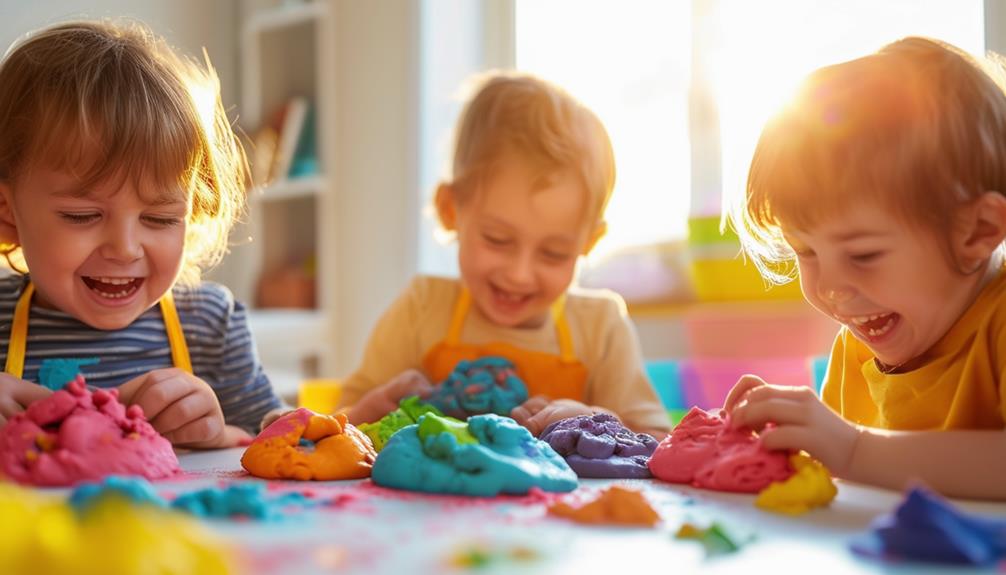
Engaging children in creating facial expressions with playdough helps them recognize and express various emotions. Using different colors to represent specific feelings enhances the activity, improving their emotional awareness and regulation.
Recognizing Facial Expressions
Helping children recognize facial expressions through creative activities is crucial for their emotional and social development. Playdough activities, in particular, can significantly enhance a child's emotional learning, emotional intelligence, and empathy. By creating various facial expressions with playdough, children learn to understand and express their own emotions, which fosters emotional awareness and improves communication skills.
Here's how to make this both enjoyable and educational:
- Craft Playdough Faces: Encourage your child to shape faces displaying different emotions such as joy, sorrow, frustration, and astonishment. This hands-on activity helps them identify and connect these emotions to their own feelings.
- Emotion Matching Games: Use playdough mats with various facial expressions and ask your child to match the expressions with the corresponding emotions. This activity enhances their ability to recognize and interpret facial cues.
- Narrating with Playdough: Have your child create characters and narrate stories using playdough figures. Prompt them to show how the characters feel at different points in the story, fostering empathy and emotional intelligence.
- Facial Expression Charades: Take turns with your child sculpting playdough faces and guessing the emotions. This interactive game promotes emotional awareness and improves social development.
These activities transform emotional learning into an engaging and enriching experience, helping your child become more adept at recognizing emotions in themselves and others.
Color-Coded Emotions
Assigning specific colors to emotions can transform how children understand and express their feelings using playdough. By associating colors with emotions, children can more easily identify and articulate what they are experiencing. For example, red might represent anger, blue could signify sadness, and yellow might denote happiness. This color-coding approach aids in visual recognition and helps children develop a vocabulary for their emotions.
Engaging in color-coded playdough activities enhances emotional intelligence by promoting self-expression and awareness. When children use different colors to symbolize their feelings, they become more attuned to their emotional states. This awareness is crucial for managing emotions and developing healthy coping strategies.
Additionally, these activities stimulate creativity and communication skills. Manipulating playdough to create shapes or figures that represent their emotions makes abstract feelings more tangible. This hands-on method encourages children to communicate their emotions safely and constructively.
Incorporating color-coded emotions into playdough activities offers a fun and educational way for children to explore their feelings. It is a powerful tool for improving emotional intelligence and building essential communication skills.
Incorporating Playdough in Routine
Incorporating playdough into your child's daily routine can significantly enhance their emotional development and overall well-being. Playdough offers various benefits, including supporting social and emotional growth through hands-on sensory experiences that help children regulate their emotions. Creative expression with playdough allows them to convey feelings that might be difficult to articulate. Here are some effective ways to include playdough in your routine:
- Morning Play: Start the day with a calm and focused activity. Playdough can help children transition from sleep to wakefulness by engaging their fine motor skills and encouraging imaginative play.
- After-School Relaxation: Use playdough as a therapeutic outlet to release any pent-up energy or frustration from the school day. It provides a safe and constructive way to manage emotions.
- Family Playtime: Incorporate playdough into family activities to foster bonding and stimulate social interactions, promoting both emotional and social development.
- Bedtime Ritual: Spend a few minutes with playdough before bedtime as a soothing activity, helping children unwind and prepare for sleep.

